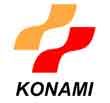Anime News
|
The Little Guy Gets a Piece of the Animated Action Date: 6/19/2005 |
|
Major studios open their arms -- and wallets -- to entrepreneurs who can offer that golden combination: creativity and cost-efficiency. By Richard Verrier, Times Staff Writer The upcoming computer-animated film "Valiant" tells the story of a plucky bird who overcomes his small size to become a heroic homing pigeon during World War II. It's a theme that resonates for the movie's producer, John Williams. A former member of the creative team that made DreamWorks' "Shrek" and its sequel, Williams set out a few years ago to found his own small independent production house, Vanguard Animation. Flush with financing from European and Asian investors, he then made "Valiant" for $40 million ? less than half of what the major studios usually spend on animated fare. But Williams' biggest accomplishment came three years ago, when he secured what in indie animation circles is considered the holy grail: a distribution deal with a major studio, Walt Disney Pictures. The movie is expected in theaters in August. For more than half a century, big Hollywood studios dominated all facets of animation moviemaking. Not anymore. Buoyed by soaring consumer demand, and with plummeting technology costs lowering barriers to entry, animation entrepreneurs like Williams are quietly transforming the business. Increasingly, major studios are relying on independent producers such as Vanguard in Los Angeles, Wild Brain Inc. in San Francisco and Threshold Animation Studios in Santa Monica to help feed their expanding pipelines while keeping production costs low. "We clearly understand the value of discovering and partnering with new voices in the animation world and bringing them into the fold," said Fox Animation Studios President Chris Meledandri, citing Fox's acquisition of Blue Sky Studios, creator of the hit movie "Ice Age" and the recently released "Robots." Call it the Pixar effect. The success of Emeryville-based Pixar Animation Studios is helping to fuel a surge in animation companies all over the country. The studio's computer-generated, or CG, blockbusters "Toy Story" and "Toy Story 2" took in more than $430 million combined at the box office. "A Bug's Life," "Monsters Inc." and "Finding Nemo" together took in more than $750 million. Those kinds of numbers can translate into big profits, particularly if production costs ? which have been known to exceed $100 million ? can be kept down. Given the rising expense of making live-action movies, the prospect of producing an animated film for less than $50 million is increasingly irresistible. "We don't see ourselves competing against Pixar; we look at them as big brother," says Kelly Williamson, chief executive of CritterPix Studios, a San Rafael start-up developing a $30-million movie about the misadventures of an otter named Ollie. Steve Ogden, editor of AnimWatch, an online magazine that tracks industry trends, notes that optimism is at a high. "People either think they are or want to be the next John Lasseter," he said, referring to the creative guru at Pixar. "There's a gold rush mentality." It's more affordable than ever to become a prospector. A decade ago, a single computer workstation used in making a CG film cost roughly $80,000. Today, movies can be made on $3,000 home computers, and 3-D software that once cost $20,000 or more can be bought at Circuit City for about $2,000. "Technology has liberated independent animators and given them an opportunity to break into the motion picture realm," said Ron Diamond, co-publisher of Animation World Network, which operates an online trade magazine. "It's a huge shift." This new breed of animation entrepreneurs includes established digital-effects houses and TV-commercial shops eager for a piece of the animation business as well as veteran animators who have left the major studios and gone solo. Consider James Baxter. For nine years, Baxter worked his way up the ranks at DreamWorks, eventually supervising animation on such high-profile films as "Shrek 2" and the just-released "Madagascar." But in January, he gave up the security and prestige of his job to launch his own business. Bucking the industry march toward computer animation, he is specializing in the traditional hand-drawn form. "For years I had this romantic idea of striking out on my own," said Baxter, 38. "I wanted to control my own destiny." With the help of some freelancers, a scanner, three Dell computers and some hand-me-down desks from his former employer, Baxter and his wife, Kendra, set up shop in a 3,500-square-foot former mattress factory in Pasadena. Their start-up capital: $100,000 pooled from their savings. To help pay the bills, Baxter has dabbled in small commercial jobs and animated sequences on the 2-D animated movie "Curious George." Ultimately, though, Baxter aims to make his own full-length feature. "We're doing this from the ground up," he said, as his two young children scurried about his office. On the other end of the spectrum are several new players with very deep pockets. This month, IDT Entertainment ? which two years ago acquired a controlling interest in Film Roman, the production company that makes the hit TV comedy "The Simpsons" ? signed a two-year distribution deal with Fox. IDT, a subsidiary of a New Jersey telecommunications company that makes most of its money on calling cards, has been pouring millions into developing computer-animated projects with budgets of less than $30 million. "We're a start-up with a billion dollars in the bank," quipped Chief Executive Morris Berger. "We see tremendous opportunities in feature animation." So does Phil Knight, the co-founder of Nike Inc. In 2003, he acquired Portland, Ore.-based Vinton Studios, an animation company best known for its M&M and California Raisins TV spots. Now Knight has agreed to finance half the cost of several animated feature projects, including one based on the popular children's novel "Coraline." Henry Selick, a veteran director of "James and the Giant Peach" and Tim Burton's "The Nightmare Before Christmas," is supervising the project. He says he works more efficiently at Vinton than at a big studio. "I don't have to sell the look of the film to a committee of executives," he said. That contention ? that indie studios are more nimble, and thus work more quickly and cost-effectively ? is winning many studios over. Late last year, for example, Threshold Animation persuaded Lions Gate Films to distribute its first CG movie, "Foodfight!" The movie, which chronicles what happens in a grocery store when the foodstuffs come to life, features such branded icons as Mr. Clean and Charlie the Tuna. You might think such brands would drive up the cost. In fact, Threshold got permission to use those likenesses for free. It was the elaborate process of animating 20,000 "extras" that threatened to push the budget sky-high. Normally, such an ambitious project would cost at least $100 million. But Threshold was able to whittle that down to about $65 million thanks to an unusual partnership with IBM. According to Threshold Chief Executive Larry Kasanoff, IBM is powering much of the studio's animation work through one of its on-demand centers ? a bank of powerful computers designed to provide faraway businesses remote access. The computer giant also is helping to promote the movie. IBM recently bought a full-color ad in Time magazine touting both the movie and its computers for creating "high-end animation in half the time, at half the cost." IBM's involvement was a key selling point for Lions Gate executives, who first saw a reel of the movie last year. "We were blown away," Lions Gate Releasing President Tom Ortenberg said. Due in fall 2006, "Foodfight!" will be Lions Gate's first CG release. And Ortenberg has pledged more than $20 million to market it. In the fall, Wild Brain Inc. got similar backing from Miramax Films co-founders Bob and Harvey Weinstein. Wowed by the Bay Area company's track record of producing award-winning commercials and film shorts, the brothers agreed to co-finance and distribute several features. Budgeted at $50 million, their first project is "Opus," based on the wisecracking penguin featured in the newspaper cartoon strip "Bloom County" and now "Opus," created by Berkeley Breathed. It is scheduled for release in 2007, though it is unclear by whom (the Weinsteins are leaving Miramax, owned by the Walt Disney Co., to open their own company). "Nobody's cornered the market on storytelling and creativity," said Wild Brain co-founder and executive producer Jeff Fino. "That's one thing the multinational corporations can't own exclusively." At Vanguard, Williams remembers pitching Disney executives the idea of "Valiant" three years ago. At a meeting with Disney President Bob Iger and studio chief Dick Cook at the company's Burbank lot, Williams showed test reels and presented a completed script. Disney brass liked the project's hero and villain. They also liked its economics: Williams was asking Disney to put up just 25% of the cost, and only if he delivered the movie in two years ? half the usual time ? and at less than half the traditional budget. The low-risk pitch won over the Disney executives. "We thought it was an attractive economic model," Cook said. "It was mutually beneficial." Initially, Disney planned an April release on a few hundred screens. But after strong audience test scores and favorable reaction from Chief Executive Michael Eisner, Disney pushed the opening back and committed to 2,000 screens. Meanwhile, Vanguard has two other CG films in the works. Williams is negotiating with several distributors in the U.S. for "Space Chimps," about a hapless monkey on an intergalactic journey, and "Happily N'Ever After," a takeoff on Grimms' fairy tales. "Our example proves that any studio can be in this business if you have the right idea," Williams said. "We think we're an alternative." |
| Source: LA Times |























